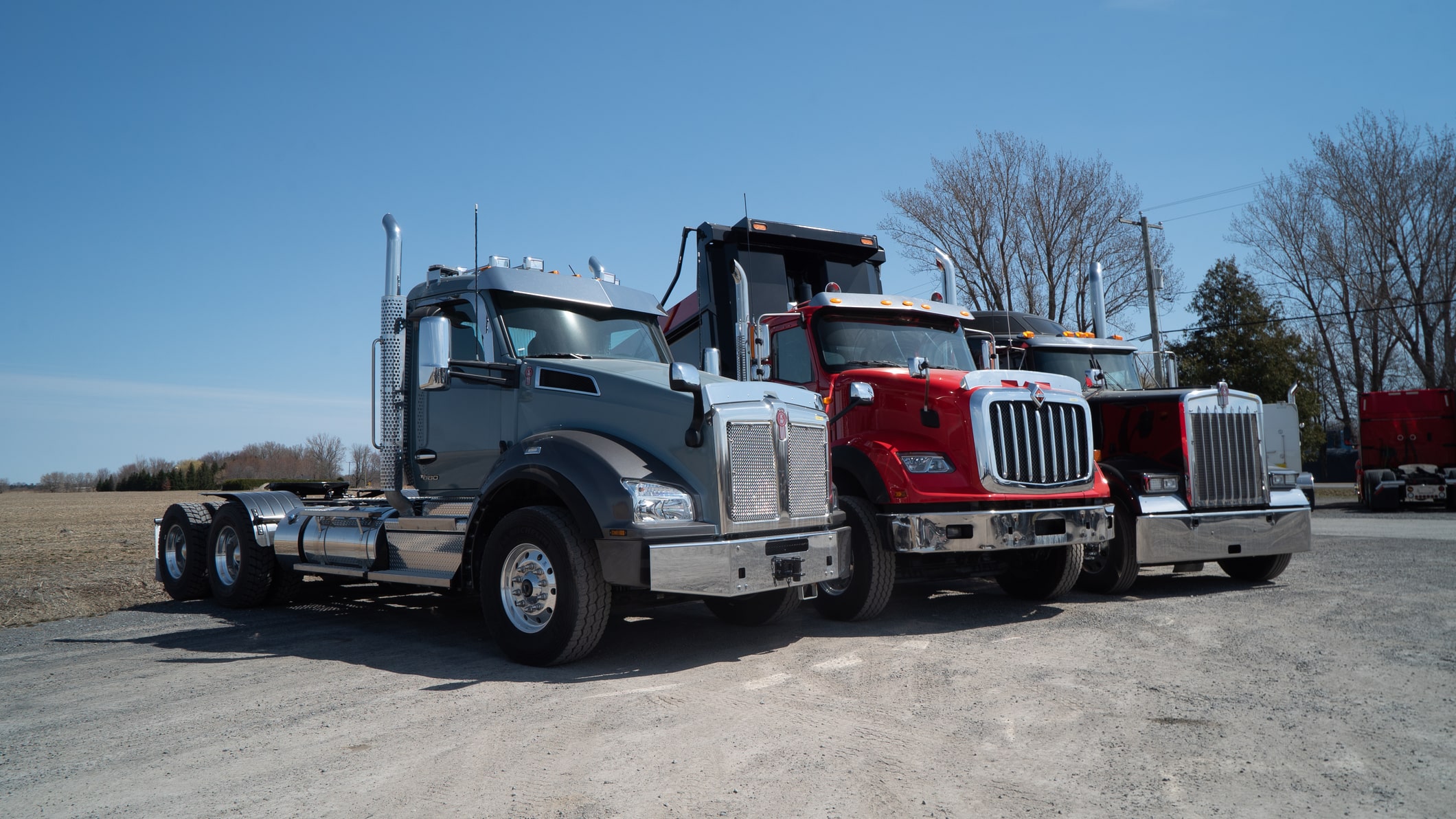Buying a used heavy-duty truck goes far beyond choosing a make or model. It involves entering a very specific technical and regulatory world, where acronyms like GVWR and terms like “Class 8” (which designates the vehicle’s category based on its weight, not to be confused with driver’s license classes like Class 1 or 3) or “PEP inspection” are commonplace. Understanding this technical and legal “identity card” is not only essential to making a good investment, but it is also a requirement for driving in full compliance on Quebec roads.
At the Gamache Truck Center, we meet with contractors and truck drivers every day. We know this jargon can be complex. That’s why we’ve created this simple guide to help you decipher the basic concepts and make an informed, confident choice.
What defines a heavy truck?
The first thing to know is what qualifies a vehicle as “heavy.” In Quebec, a vehicle or combination of vehicles is considered heavy when its gross vehicle weight rating (GVWR) is 4,500 kg or more. Once a truck crosses this threshold, it falls into a specific category subject to strict regulations by the Société de l’assurance automobile du Québec (SAAQ) and Contrôle routier Québec (CTQ), organizations that oversee the sector to ensure everyone’s safety on our roads.
GVWR (Gross Vehicle Weight Rating): The key figure to understand
You’ll hear about GVWR all the time. It’s the most important piece of information you’ll find on the vehicle’s manufacturer’s compliance label, a sticker usually located on the driver’s side door frame.
Clear definition of GVWR
It is important not to confuse the GVWR with the truck’s unladen weight (tare weight), which is the weight stated on the vehicle’s registration document (“the registration”). The GVWR is the maximum weight the vehicle can reach, including the truck itself, all its equipment, fluids (fuel, etc.), the driver, passengers AND the maximum load it is designed to carry, according to the manufacturer’s specifications.
Why is GVWR so important?
This number determines almost everything else:
- The truck class (we’ll come to that later).
- The type of driving license required (Class 1, 3, etc.).
- Mandatory mechanical inspections imposed by the SAAQ.
- Load limits to be observed on different types of roads and bridges.
- Registrations and associated costs.
In short, knowing the GVWR of your future used truck is one of the first steps to ensuring that it meets both your driving requirements and the type of work you want to do with it.
Heavy goods vehicle classes: From Class 7 to Class 9
GVWR is used to classify trucks into different classes. For heavy-duty trucks, we mainly talk about classes 7, 8, and 9.
Class 7: The versatile “heavy” vehicles
With a GVWR ranging from 11,794 kg (26,001 lb) to 14,969 kg (33,000 lb), Class 7 trucks are rugged vehicles used for a variety of tasks. Examples include larger delivery trucks (often called “10-wheelers”), some dump trucks , boom trucks, and street sweepers.
Class 8: The premier category of heavy transport;
This is the most common category on our roads. A Class 8 truck has a GVWR greater than 14,969 kg (33,001 lb) and has no upper limit defined by the class itself (it is limited by road regulations). This is where we find the vast majority of road tractors that pull semi-trailers, large 12 or 14-wheel dump trucks , cement mixers (mixers), and other heavy equipment.
Class 9 and above: Super-heavy vehicles for exceptional transport
This class refers to “super-heavy” vehicles, often specially configured for oversized transport (exceptional convoys). Consider lowboys transporting heavy machinery or massive industrial parts. These vehicles require special permits and are reserved for very specific uses.
SAAQ regulations: What every owner needs to know
Owning and operating a used heavy truck in Quebec involves complying with strict rules.
The mandatory technical inspection (“PEP inspection”)
All heavy vehicles must be subject to the SAAQ’s Preventive Maintenance Program (PEP) . This means they must undergo a complete mechanical inspection at an accredited center, generally every 6 or 12 months depending on the vehicle’s age and use. This compliance sticker, affixed to the windshield, is mandatory for driving.
The appropriate driving license
Make sure you have the correct driver’s license for the truck you want:
- Class 3: Allows you to drive a straight truck (a single-unit truck) with a GVWR of 4,500 kg or more.
- Class 1: Allows you to drive a set of road vehicles (tractor and semi-trailer).
Driving hours and the electronic logbook
The operation of a heavy vehicle for commercial purposes is subject to strict rules on driving and rest hours, which must be recorded in an electronic logging device (ELD), commonly known as the electronic “logbook”.
Gamache Group: Your guide through the regulatory maze
At Gamache Truck Center, we don’t just sell trucks; we help you navigate this complex environment.
- Compliant vehicles: We ensure that the trucks in our inventory are compliant and ready to pass the required inspections.
- Expert Advice: Our advisors understand these regulations. They can guide you toward a vehicle that not only meets your business needs, but also your driver’s license and legal requirements. We’re here to answer your questions about GVWR, courses, and what it means for you.
To conclude: Buy a heavy goods vehicle with full knowledge of the facts
Understanding GVWR, vehicle classes, and SAAQ regulations isn’t optional; it’s the foundation for a successful purchase and trouble-free operation. By mastering these concepts, you’re in a much better position to choose a used heavy-duty truck that will be a capable, safe, and profitable asset to your business.
Ready to find a used heavy goods vehicle that meets or exceeds specifications?
Don’t hesitate to ask the experts at the Gamache Truck Center any questions you may have. Our team is here to help you navigate your options and find the truck that meets all your technical and regulatory requirements. Explore our inventory online or contact us directly for a no-obligation discussion.








